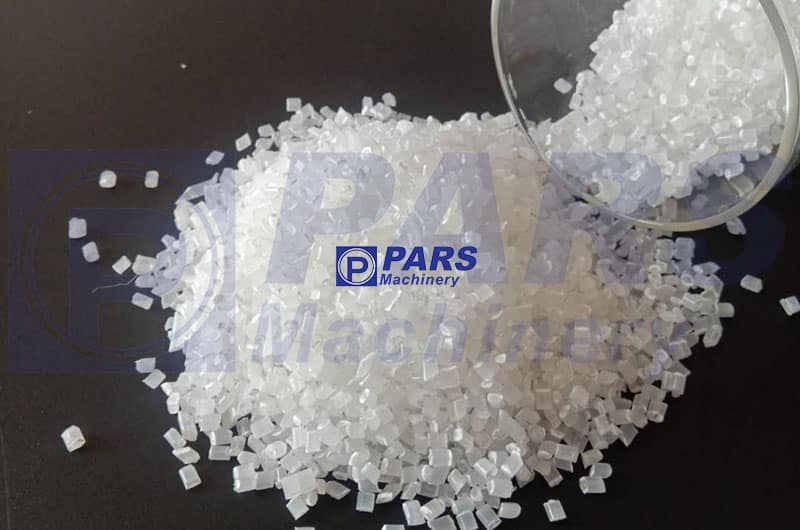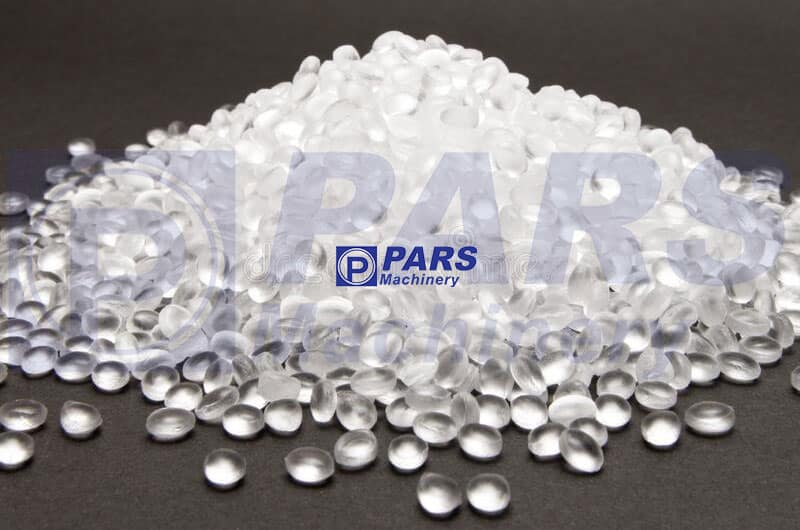Types of plastic granules and their use
Plastic granules, sometimes called polymers, are one of the most widely used raw materials in the world. They are used to make a variety of things, from now-essential face masks to bulletproof vests and all sorts of plastic items. There are many types of plastic available today. Most of them fall into one of two categories: thermoplastics and thermosets.
While products made from thermoplastics require liquid resin to make them, products made from thermoplastics usually use plastic granules as raw materials. Simply put, plastic granules are thermoplastics that are made of grain-like materials with a diameter of about 3 mm. Then these plastic granules are melted to be used by the manufacturers of different products in different machines, including plastic injection machines, inflatable plastic machines, etc.
There are different types of plastic granules. Some of them, such as polypropylene granules (PP granules), polyethylene granules (PE granules), electret masterbatch, polystyrene granules (PS granules) and polyvinyl chloride granules (PVC granules) Can be named. In the following, a detailed explanation of some of these plastic granules, their properties, uses, advantages and production methods is explained.
Granule PP (polypropylene)
Polypropylene, also called polypropylene, is a thermoplastic polymer produced through the polymerization of propylene gas in the presence of a catalyst system (Ziegler-Natta catalysts). This gas is one of the by-products of crude oil and natural gas. It is one of the most popular thermoplastics used in the world and has various uses.
It can be produced in different molecular weights by modifying the polymerization conditions during production. This type of granule is usually used in the form of pellets, powder, fibers and plastic granules to make other items.
Advantages of PP (polypropylene) granules
It is resistant to many chemical solvents, dilute acids and bases.
It has sufficient heat resistance with a melting point of 160 or 170 degrees Celsius.
It can be dyed to give different colors.
It has high tensile strength and favorable weight-to-strength ratio.
Due to its semi-crystalline nature, it has high bending strength
Applications of pp granules
Polypropylene is so popular that it is used to produce many things. Some of them include carpet fibers, automotive components, ropes, stationery, reusable containers, laboratory equipment, polymer sheets, packaging applications, medical equipment, etc.
Electret Masterbatch
Electret Masterbatch is not actually a polymer. It is an additive that provides better filtration capability for certain fabrics made from PP granules. By treating fabrics with electret, the filtration capability increases from about 50% to 90% or even more. Processing fabrics with Electret gives them the ability to filter air, dust, bacteria and virus particles as small as 0.3 microns.
The Electret masterbatch achieves this by carrying an electrostatic charge. It increases the depth and density of the electric charge in the fabrics, thereby releasing negative ions and storing the electric charge, and is responsible for improving the filtration efficiency of the fabric. Electret masterbatch can be divided into two categories: oil and salt.
Advantages of Electret masterbatch
Blocks dust, bacteria, viruses and aerosol particles.
Heating and pressurizing it increases its filtration ability. This effect doubles with every 10 degree increase in temperature.
Electret masterbatch applications
It is used in the production of medical masks
It is used to make medical protective clothing
It is used to produce disposable products
It is used in making medical surgical clothes
PE granule (polyethylene)
Polyethylene or polyethylene is a thermoplastic polymer produced from the polymerization of propylene gas in the presence of a catalyst system (Ziegler-Natta catalysts). This gas is also one of the by-products of crude oil and natural gas. This thermoplastic is the most popular thermoplastic used in a wide range of applications due to its variety.
Polyethylene can be classified into the following types:
Low Density PE (LDPE)
High Density Polyethylene (HDPE)
Linear Low Density PE (LLDPE)
Ultra high molecular weight polyethylene (UHMWPE)
Ultra low molecular weight polyethylene (ULMWPE)
High molecular weight PE (HMWPE)
High density cross-linked polyethylene (HDXLPE)
Cross-linked PE (PEX or XLPE)
Very low density polyethylene (VLDPE)
Chlorine PE (CPE)
Like polypropylene, it is commonly used in the form of pellets, powders, fibers, and plastic granules to produce other items. Polyethylene is one of the most common types of granules.
Advantages of PE (polyethylene) granules
Polyethylene has several advantages depending on its type.
LDPE is a flexible material with high ductility but low tensile strength. This makes it suitable for the production of shopping bags and plastic nylons.
HDPE has a highly crystalline structure that hardens the plastic. This makes it suitable for producing things like trash cans, springboards, etc.
UHMWPE is a very dense type of polyethylene. It has very high tensile strength and is commonly incorporated into bulletproof vests and high performance equipment.



